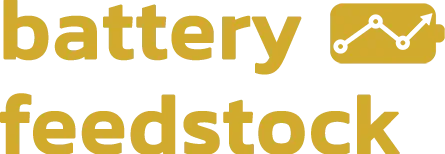Lithium and Cobalt Market Dynamics
Publish Date
Global lithium markets remain oversupplied despite a brief price bounce, driven by continued high production and uneven EV demand. For example, Chinese battery‐grade lithium carbonate spot prices briefly rose to ~¥66,000/mt in early August (from ~¥59,000) on policy support, but analysts warn the rebound is likely short-lived in an oversupplied market. Leading miners like Australia’s Pilbara Minerals are still expanding: Pilbara reported a record 755,000 t of spodumene concentrate production in FY2024-25 and raised $1.6 billion in liquidity through self-funded expansions. On the demand side, strong EV and energy storage growth (EV sales +126% YoY, storage +151%) gives long‑term support, but in the near term lower power battery uptake (and a switch to LFP batteries) has kept lithium prices under pressure. Meanwhile, the cobalt market is shifting from surplus toward tighter balances. The DRC’s ongoing export ban has forced miners like Glencore to stockpile output, signaling deliberate supply cuts that could support cobalt prices. Glencore says its DRC cobalt exports may remain unsold through 2025, yet it raised its 2025 output guidance to ~42–45 kt (up from 38.2 kt in 2024). This suggests Glencore views the ban as a temporary supply adjustment, not a long‑term crisis. As excess stock is drawn down, cobalt prices are expected to firm in late 2025/early 2026.
Lithium Market Trends
Lithium prices saw a modest mid‐year rally but remain under pressure. Chinese spot lithium carbonate recovered to about ¥66,000/mt by late July (from ¥59,000 in Q2) thanks to measures to “proactively stabilize prices,” but oversupply persists. Our analysts note that Chinese plants are still oversupplied (with some brine plants idled) and global fundamentals remain bearish, so any rebound may be fleeting. In Brazil, new spodumene offers have emerged – for example, Platts assessed Brazilian spodumene at $800/mt FOB on July 25 (up $50 on the day) – indicating miners are willing to sell at lower prices. In sum, short-term lithium prices may stay rangebound or slip if demand softens; a sustained rally likely requires deeper production cuts.
Longer-term demand for lithium stays robust. Global EV and battery storage deployments continue to expand rapidly (over 50% CAGR in PEV sales, with China’s PEV penetration >50%). Europe and China have strong incentive policies driving demand. However, supply risks remain: Chinese production has faced environmental and licensing curbs (some Jiangxi mines facing suspension), which could tighten near-term supply. Investors should watch second-half production programs and any additional Chinese policy actions (such as export controls on technology or environmental rectifications). Notably, major miners like Pilbara Minerals are moving “downstream” by securing offtakes and investing in refining capacity (e.g. a JV with POSCO in Korea), aiming to lock in margins amid low raw prices.
Cobalt Market Outlook
The cobalt market is transitioning from oversupply toward a controlled rebalancing. The DRC – which supplies 70%+ of world cobalt – extended its export ban (initiated in February) through year-end. Glencore, a top cobalt producer, warned that much of its Congolese cobalt may remain unsold in 2025, but it remains “quite conservative” on its financial impact. In practice, the ban tightens spot availability and forces inventory drawdowns, which Glencore expects to support prices. Reflecting this, Glencore raised its 2025 cobalt output forecast to 42–45 kt (vs. 38.2 kt in 2024), indicating confidence that the export restrictions create a temporary supply adjustment rather than a longer-term shortfall.
On the demand side, the rise of LFP (iron-phosphate) batteries has eased growth in cobalt usage for EVs, though high-energy chemistries and aerospace/military applications still need cobalt. As stockpiles are run down, analysts expect the market balance to tighten. SMM notes that with major exports paused, the “spot market will lose a major source of circulation in the short term,” likely putting upward pressure on prices. For investors, the emerging theme is controlled scarcity: large producers can manage inventory and leverage long-term contracts, whereas smaller players may struggle, leading to market concentration. In practice, cobalt prices have held around the mid-$30,000s/tonne recently. Moving forward, watch for inventory trends and policy changes in the DRC – a resumption of some exports could dilute prices again, while continued bans will lend support to late-2025/2026 price levels.
